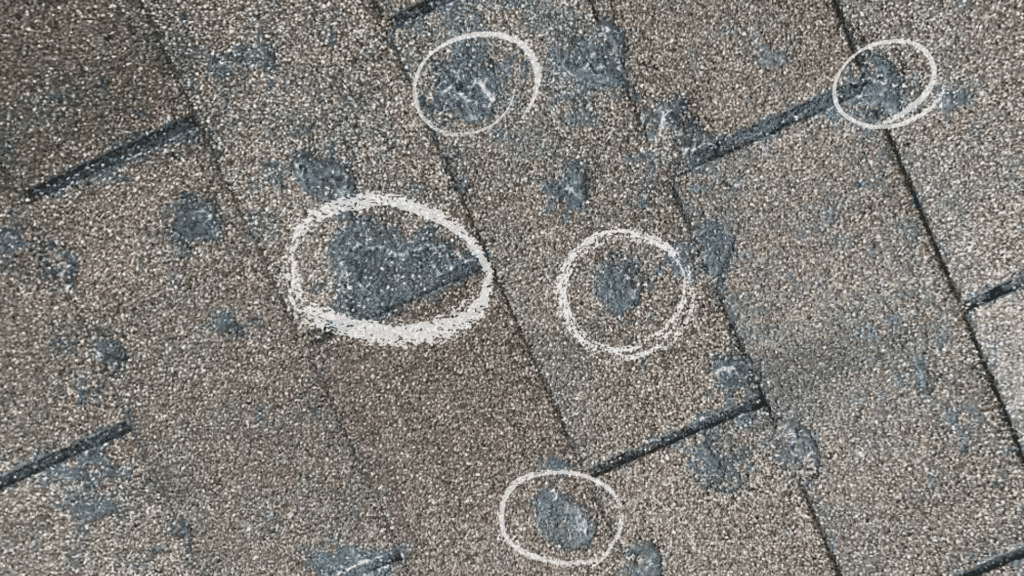Hailstorms can strike without warning, leaving homeowners wondering about the condition of their roofs long after the storm has passed.
Understanding what hail damage looks like on a roof is crucial for protecting your home and ensuring timely repairs before minor issues escalate into costly problems.
Damage to roofs isn’t always immediately obvious from the ground, and what might seem like minor cosmetic damage could actually compromise your roof’s integrity.
In this, we’ll walk you through the signs of damage, help you distinguish between normal wear and storm damage, and explain when it’s time to call in a professional roofing inspector.
What Happens to Your Roof When Hail Strikes?
When hail strikes your roof, the impact can cause both visible and hidden damage depending on the size, speed, and density of the hailstones.
Metal roofs can dent, while wooden or tile roofs may crack or split. Even small amounts can weaken protective coatings or loosen shingles, allowing moisture to seep in over time.
This moisture infiltration can lead to leaks, mold growth, or structural deterioration if not addressed quickly.
Wind direction and roof slope also influence the extent of damage. Inspecting your roof for dents, bruising, or granule loss is crucial.
What Does Hail Damage Look Like on a Roof?
Hail damage on the roof varies depending on the roofing material, size, and storm intensity. Each roof type shows unique signs of impact that homeowners should recognize.
1. Asphalt Shingle Roofs
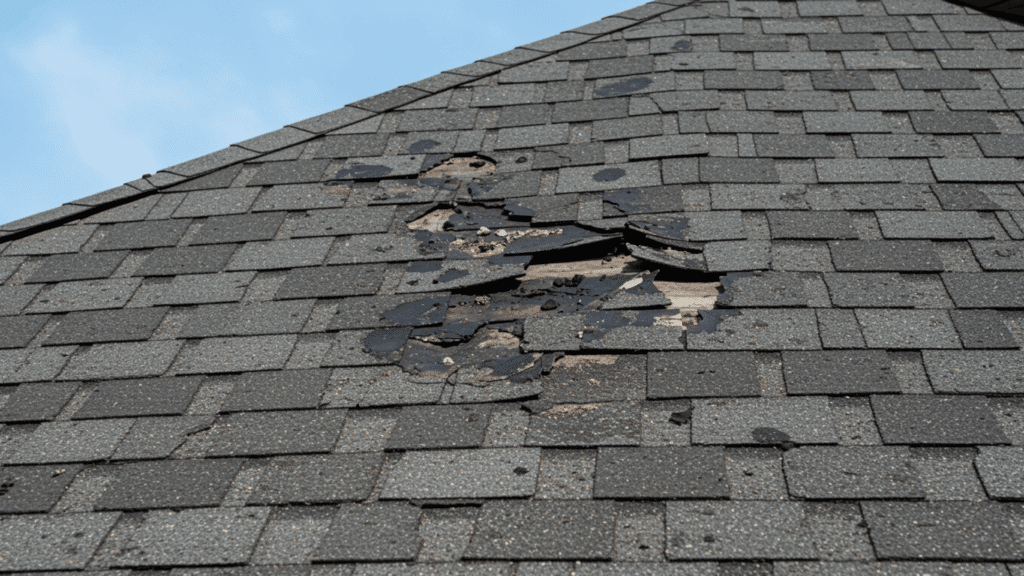
The damage on asphalt shingles appears as dark spots or bruises where hailstones have impacted the surface, causing granule loss and exposing the underlying asphalt or fiberglass mat.
You’ll notice random denting patterns with no discernible pattern, and shingles may show cracks, tears, or split edges. Granules often collect in gutters and downspouts after a hailstorm.
Severe impacts can create circular divots that compromise the shingle’s waterproofing capabilities and accelerate aging.
2. Metal Roofs
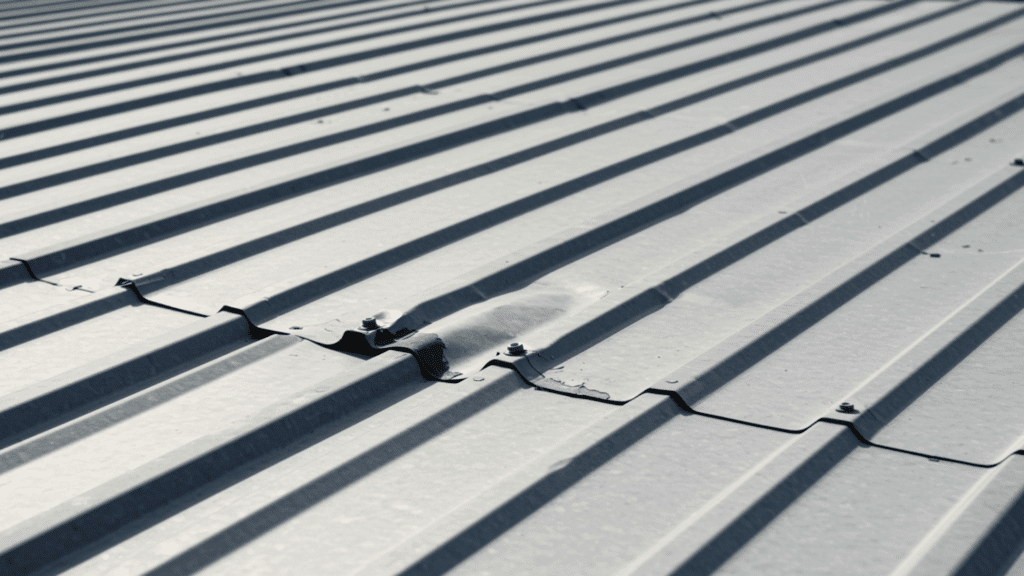
Metal roofs display damage as visible dents and dings across panels, ridges, and seams, appearing similar to golf ball dimples on the surface.
The severity depends on the metal thickness and size. You may notice functionality issues if dents occur near fasteners or overlapping seams.
While cosmetic denting doesn’t always compromise waterproofing, impacts on flashing, vents, or penetrations can create leak entry points. Paint coating may also chip or crack at impact sites.
3. Wood Shakes/Shingles
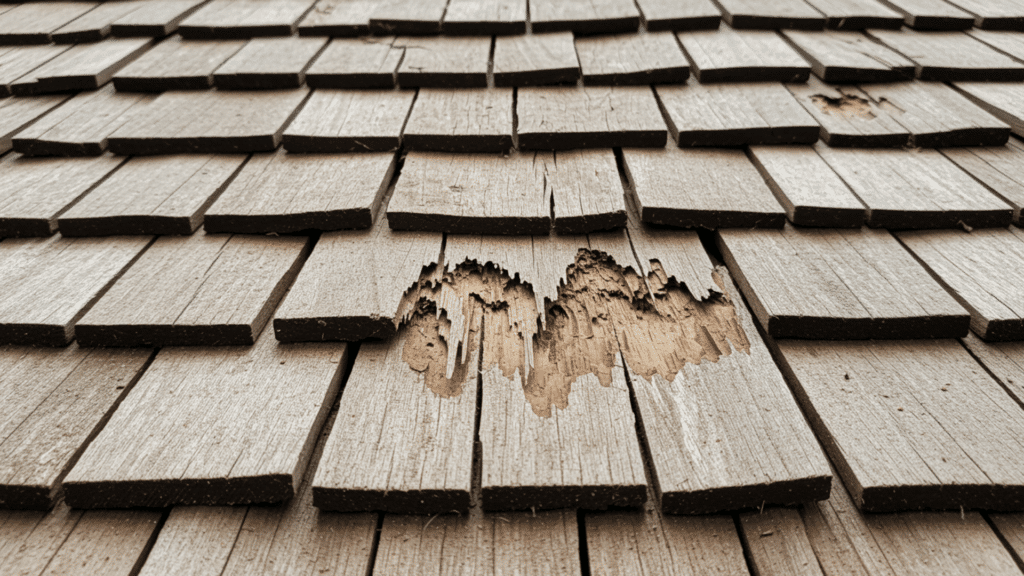
Wood shake and shingle roofs show damage through sharp-edged splits with brown or orange discoloration at impact points, distinguishing them from weathering cracks that appear gray or silver.
Hailstones create random impact marks with splintered wood fibers radiating outward. You’ll notice chunks missing from edges or corners where struck vulnerable areas.
Fresh damage appears lighter in color compared to the surrounding weathered wood. Severe impacts can penetrate completely through thinner shakes, creating immediate leak vulnerabilities
4. Tile Roofs (Clay or Concrete)
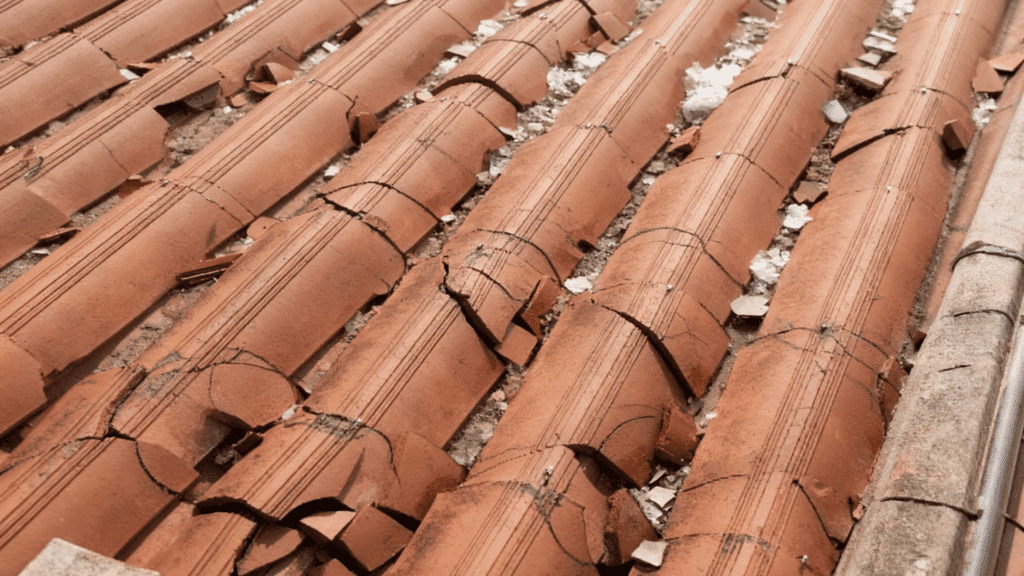
Clay and concrete tile roofs exhibit damage as visible cracks, chips, or completely shattered tiles with pieces scattered across the roof surface or in gutters.
Impact points may show as circular fracture patterns radiating outward from the strike zone. Glazed tiles display broken or missing glaze coating, exposing porous material underneath.
Even hairline cracks compromise tiles’ water-shedding ability and allow moisture penetration. Severe hailstorms can break tiles into multiple pieces, requiring complete tile replacement.
Signs of Hail Damage Beyond the Roof
Hail damage on the roof often extends beyond your roof. The table below highlights common areas around your home to check and what each type of damage can indicate.
| Area | Hail Damage Signs | Why It Matters |
|---|---|---|
| Gutters/Downspouts | Dents, cracks, or granule buildup. | Signals roof wear and poor drainage. |
| Siding/Fascia | Dings, chips, or cracked paint. | It can allow water intrusion. |
| Windows/Screens | Cracks, holes, or broken seals. | Leads to leaks and energy loss. |
| Decks/Fences | Dented or splintered surfaces. | Shows storm impact direction. |
| AC Units | Dented fins or casings. | Reduces cooling efficiency. |
| Vehicles/Furniture | Pockmarks or dents. | Confirms hail size and damage extent. |
| Ground Areas | Granules near downspouts or driveways. | Indicates shingle damage. |
When to File a Roof Insurance Claim?
Knowing when to file a roof insurance claim after a hailstorm is key to protecting your home and avoiding costly repairs.
You should file a claim as soon as possible after the storm, ideally within a few days, to meet your insurer’s timeline and ensure accurate documentation.
Start by scheduling a professional roof inspection to confirm the extent of damage and gather photo evidence.
If the inspection report confirms damage, contact your insurance company to initiate the claim and provide detailed documentation.
Acting quickly helps secure coverage, speeds up the repair process, and prevents additional expenses from weather exposure.
Roof Repair and Hail Damage Prevention Tips
After a hailstorm, quick repairs and preventive steps can make all the difference in protecting your roof and extending its lifespan.
- Inspect promptly: Schedule a professional roof inspection right after a hailstorm to assess both visible and hidden damage.
- Document everything: Take clear photos and notes for insurance claims before starting repairs.
- Fix minor issues early: Repair or replace damaged shingles, flashing, and vents to prevent leaks and structural deterioration.
- Install impact-resistant shingles: Choose Class 4-rated materials designed to withstand severe hail.
- Maintain gutters and flashing: Clean and secure these areas regularly to improve water flow and roof durability.
- Trim overhanging branches: Reduce the risk of falling debris during storms.
- Schedule annual inspections: Catch early signs of wear or storm damage before they escalate.
- Review your insurance coverage: Make sure your policy adequately covers hail and storm-related roof repairs.
Conclusion
Now that you understand what hail damage looks like on a roof, you’re better equipped to assess your property after severe weather events.
Even minor hail damage can compromise your roof’s protective capabilities and lead to leaks, mold growth, and structural deterioration over time.
If you suspect your roof has sustained damage, contact a licensed roofing contractor and your insurance company promptly to protect your home and maximize your coverage.
Taking swift action ensures your roof continues protecting your family and investment for years to come.

